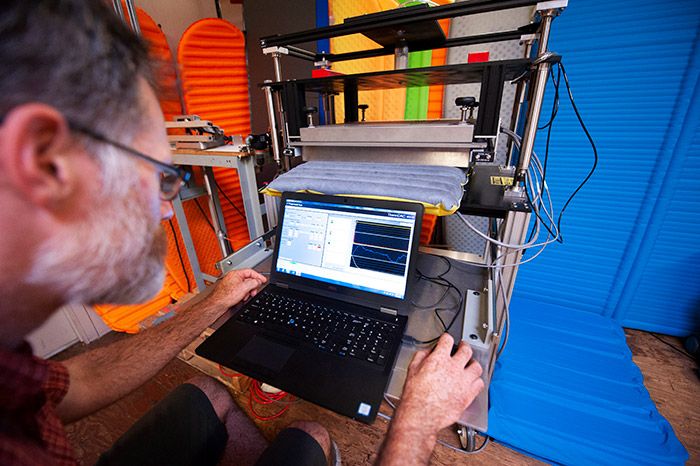- Home /
- R-Value
Shop Now
- AMK
- Ben's
- BENCHMADE
- BIOLITE
- BRIDGEDALE
- BUSHNELL
- BUTLER CREEK
- COCOON
- Fix & Fogg
- GABEL
- HILLSOUND
- HOPPE'S
- MARKSMAN
- Morakniv
- MSR
- MUELA
- Old Bear
- PACKTOWL
- PLATYPUS
- PRIMOS
- QuietKat
- Real Meals
- ROSSI
- SEALLINE
- SILVA
- SIMMONS
- SMITH'S
- SOL
-
STANLEY
-
Hydration
- Wellspring Bottle
- The Activate Shaker
- Quencher Tumbler 40 OZ
- Quencher Tumbler 30 OZ
- Quencher Tumbler 20 OZ
- Quencher ProTour 40 OZ
- Quencher ProTour 30 OZ
- Iceflow Flip Straw Tumbler 30 OZ
- Iceflow Flip Straw Tumbler 20 OZ
- Iceflow Bottle Flip Straw Lid
- Iceflow Bottle Fast Flow Lid
- All Day Slim Bottle 20 OZ
- Drinkware
- Soft Goods
- Classic
- Coolers & Jugs
- Camp Cookware
- Accessories
- 2026 H1 Product
-
Hydration
- TASCO
- THERM-A-REST
- Topo4GPS
- Uncle Mike's
- Wool+Aid
What is R-Value?
Technically, R-value is a measure of thermal resistance; the higher the R-value, the more thermally resistant the material or structure is. This isn’t just used to measure sleeping pads. Engineers and scientists also use R-value to measure everything from windows to fiberglass. Therm-a-Rest believe that it’s also the best way to measure the insulation of their pads.
They measure every pad design in their on-site cold chamber, kept at a cool 4°C (39°F). Inside this thermally-sealed container, a sleeping pad is placed between two metal plates. One section of the bottom plate has been turned into a large sensor and is kept at a steady temperature with a measured electrical current. A pad that provides a lot of insulation will help keep the bottom plate warm, so the sensor will require less electricity (energy) to maintain its temperature. A pad with less insulation will require more energy. The amount of energy required to maintain the plate’s temperature plugs into an equation to provide an R-value for each pad. The less energy required to keep the plate warm, the higher the R-value and vice versa.
At Camp
If you were to roll out your sleeping bag and laying directly on the ground, you would quickly get cold due to conductive heat loss between your warm body and the cold ground. The compressed down would fail to create an insulative layer between the two. By selecting an appropriately insulated sleeping pad, you’ll stay warm throughout the night, and wake up prepared for the trail. This process is what makes a sleeping pad so important.
How To Use R-value
R-value can be very informative while building your sleep system for a specific adventure. Let’s say you’re going into the Tararua's in September. You’ll be expecting brisk nights, but there’s real potential for frigid ones too. Do you bring the giant -10°C winter sleeping bag to be safe or your three-season bag and risk a few cold nights? Most people will make a decision based on bag warmth alone, but by factoring in pad warmth, you suddenly have more options. For instance, on a NeoAir® XLite® (R-value:4.2, Weight: 340g), you should get the comfort your bag is rated for. However, jump up to NeoAir® XTherm™; (R-value: 6.9, Weight: 430g) and you could get by on those coldest nights with a greater comfort margin for only an extra 90g – which is much lighter than hauling that heavy winter bag.
There are many variables that affect your sleep system’s warmth, but R-value is a crucial piece to the puzzle. That’s what intentional gear selection is all about. Selecting the proper sleeping pad will make a big difference in the way you sleep on your next adventure.
THE ASTM R-VALUE STANDARD: RATING SLEEPING PAD INSULATION
In 2016, a group of industry leaders began developing a standard methodology for rating the insulative properties of sleeping pads. Therm-a-Rest teamed up with other companies to create what would become known as the ASTM F3340-18 standard. This standard allows campers to look at two or more sleeping pads and directly compare the R-value of each.
Similar to EN/ISO ratings for sleeping bags, the ASTM R-value standard ensures an “apples-to-apples” comparison of R-value for the sleeping pad market. R-value is a measure of a material or structure’s thermal resistance to heat loss. In this case, the structure is your sleeping pad. The higher the R-value, the more thermally resistant the material or structure is. This number gives a definitive rating for customers to compare the warmth of various pads. Thereby, allowing them to find the right sleeping pad for their needs.
So rather than trust one companies assertion of whether their mattress is appropriate for 3 or 4-season use, look for an ASTM-certified R-Value to ensure you are comparing apples with apples.

